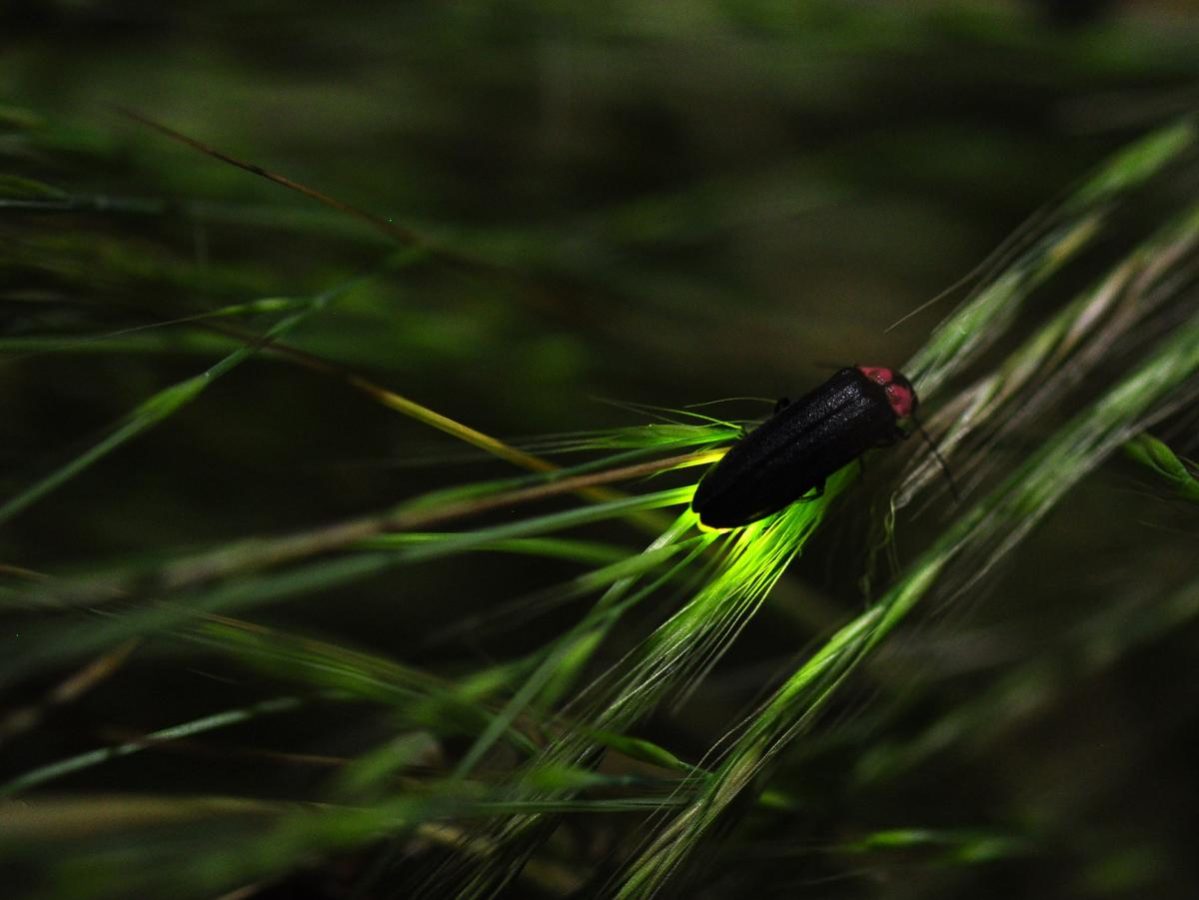When the English poet Gerard Manley Hopkins wrote, “The world is charged with the grandeur of God./ It will flame out, like shining from shook foil,” he might have been speaking of the wondrous phenomenon that scientists today call bioluminescence. Creatures from dinoflagellates to sharks emit light in a rainbow of colors. Unlike the glow from a red-hot coal, however, this light is “cold”: the chemical reaction that produces it gives off no heat.
Bioluminescence first evolved in the oceans and is still most common there. Most deep-sea animals have light organs that they use to communicate with each other, attract prey, deter predators, camouflage themselves, or dimly illuminate the dark void. Deep-sea bioluminescence is usually blue-green, since only shorter wavelengths travel effectively through water. Terrestrial bioluminescence evolved later, is much rarer, and is increasingly hard to see in our light-polluted world, but it shines in our own backyards. The larvae and adult females of the seldom-seen glowworm beetle (Phengodidae spp.) are festooned with yellow-green lights. The forests sometimes shimmer with so-called foxfire, the icy green glow of bioluminescent wood fungi such as the bitter oyster mushroom, Panellus stipticus. Perhaps foxfire was the ultimate origin of the will-o’-the-wisps, those ghost lights that early European settlers swore they saw in the swamps and fens of North America.
But nothing shines so brightly in the Finger Lakes as the fireflies, beetles of the family Lampyridae. Their bioluminescence may have originally evolved as a defense against being eaten and only later adopted as a mating signal. Diurnal animals usually warn predators of their toxicity using bright colors or striking patterns, but only a glowing message stands out in the dark. The mostly nocturnal firefly larvae cull toxic steroids from the slugs and snails that they eat; their lights serve as a menacing public service announcement, as does the sullen glow of the noxious firefly pupa. Adults likewise flash their light organs to warn bats that they are poisonous. Even the eggs of some species luminesce when they are disturbed, like fairy globes hidden in the leaf litter.
Of course, it is the grand courtship displays of the fireflies that we know the best. On sluggish, hot summer nights in the Finger Lakes, the wet meadows and moist forest edges are streaked with sparks flying from a phantom fire. It is a gala event: more than twenty species of firefly are known to live in New York state, though Photinus pyralis, the common eastern firefly, is the most common. The males fly in species-specific flight patterns, flashing amorous code to females, who wait on the ground below. If a female approves, she signals once; the male then approaches her gradually, flashing grandly all the while. Although the speed of light production is dependent on ambient temperature, females still seem to like males that flash a bit faster than average. The fireflies even color-coordinate their displays: species that are active earlier in the evening glow yellow in order to differentiate their lights from the green foliage; those that come out later in the evening tend to glow green.
There is a yet third way that some female fireflies have learned to use their lights: as bait. The Photuris versicolor female beams seductively at Photinus males, although her flash pattern isn’t quite right. If a male is foolhardy enough to ignore the red flags and approach her anyway, she will attack and eat him, gaining calories and the all-important defensive toxins for herself and her offspring. It is a sad irony: Photinus’ lights, which evolved to protect him, serve only to attract a femme fatale bent on taking his poison for her own.
In order to avoid rapacious Photuris females, some fireflies have taken drastic measures, becoming diurnal. The adult black firefly, Lucidota atra, and the winter firefly, Ellychnia corrusca, have lost their fire, though they still glow as larvae and pupae. The winter firefly has gone a step further to stay out of Photuris’ way, mating in early spring rather than midsummer. These lightless lightning bugs still taste just as bad as their nocturnal cousins, a fact that they announce with brilliant red stripes along the sides of their heads.


